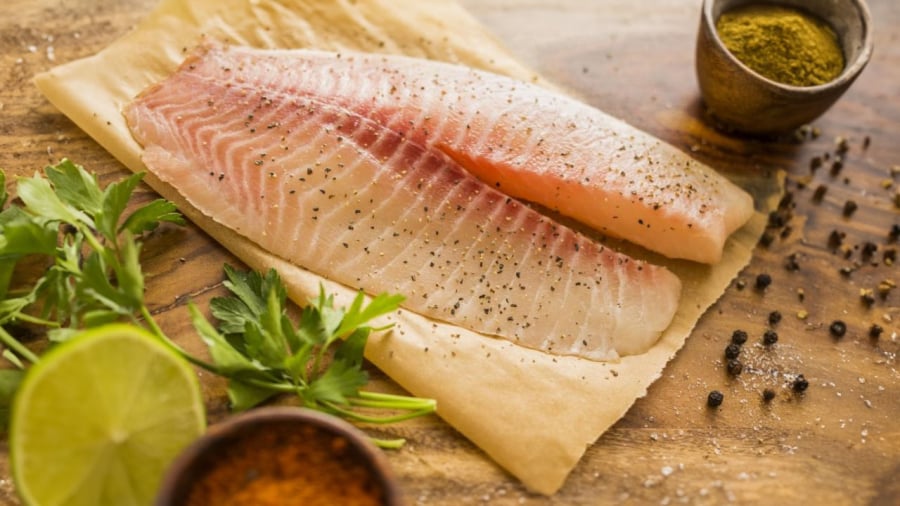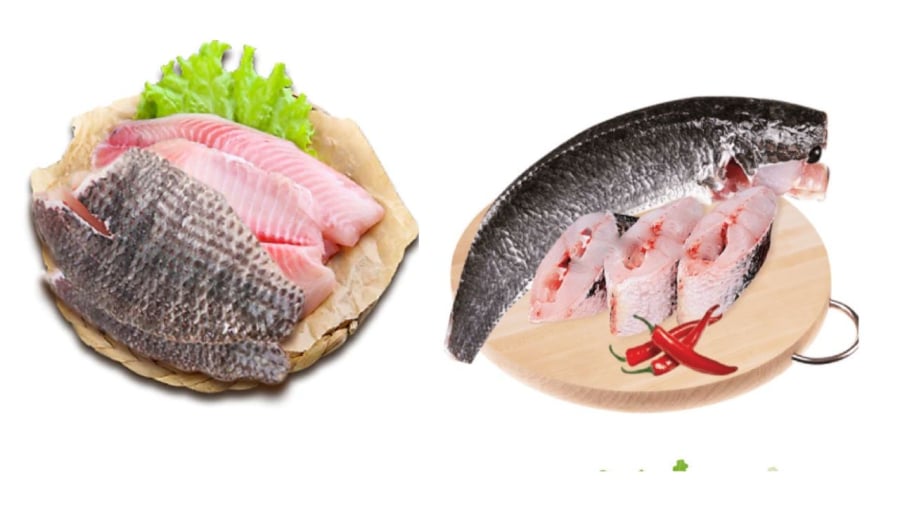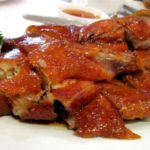Joint pain is quite common among Vietnamese people, especially middle-aged and elderly individuals. The symptoms of joint pain tend to worsen during cold weather and damp conditions. In traditional medicine, the improvement of joint pain often involves a combination of medication and pain relief methods such as acupuncture, electrotherapy, acupressure, ginger or turmeric oil massage, herbal poultice, steam therapy, herbal foot soak, or medical acupuncture. In addition, diet plays an important role in improving the condition. Some foods are considered medicinal for joint pain.

Fish is a good food for joint pain patients
One of the good foods for joint pain patients is fish. There are types of fish that are beneficial for individuals with joint pain. It is recommended that patients consume at least two fish meals per week, if not more. Regular fish consumption is beneficial for overall health due to its high protein and good fat content. It can also prevent diseases and provide support for treatment if there are family members with joint pain during seasonal changes. Some types of fish that are highly nutritious for patients with joint pain include:
Burmese snakehead fish (Channa striata): This type of fish has a lot of meat and few bones, and it has a pleasant non-fishy aroma. In traditional medicine, burmese snakehead fish has a mild and balanced taste; its meat has the effect of reducing low-grade inflammation, expelling wind, cooling heat, nourishing blood and tendons, facilitating conception, and dispersing water. Dishes made from burmese snakehead fish are especially good for those with joint pain and muscle fatigue. You can use burmese snakehead fish to cook dishes such as vegetable soup with water spinach, porridge with burmese snakehead fish, or stewed burmese snakehead fish with green bananas.

It is recommended to have at least 2 fish meals per week for good health and joint health
Tilapia: Tilapia is a type of fish that is the most affordable in the market and has the feature of easily deboning its meat. The taste of tilapia is sweet and balanced, non-toxic, and has the effects of nourishing blood and tendons, benefiting the urinary system, and nourishing bones and tendons. However, caution should be exercised when processing and using it, as tilapia has many small bones. When buying tilapia, choose natural tilapia and avoid fish that may be contaminated with bacteria during the farming process.
Common carp: Common carp is a delicious fish with a lot of meat and few bones. It has a sweet taste and a balanced and mild nature that is compatible with most people’s physical conditions, including patients with joint pain.
Mud carp: Mud carp in traditional medicine has a sweet taste, balanced and non-toxic nature. Its functions include detoxification, treatment of low-grade inflammation, relief of low back pain, and relief of knee pain.
Modern medicine also encourages joint pain patients, especially older individuals, to keep their body warm, especially the limbs and chest. Patients should engage in suitable exercise and physical activities, maintain a balanced diet with foods rich in vitamin D and calcium, lose weight if possible or maintain an ideal body weight. The use of pain relievers should be prescribed by a physician after examination and evaluation.
Traditional medicine often combines medication with pain relief methods such as acupuncture, electrotherapy, acupressure, ginger or turmeric oil massage, herbal poultices, steam therapy, herbal foot soaks, and medical acupuncture.
Yes, diet is important for improving joint pain. Certain foods are considered medicinal for this condition.
Burmese snakehead fish, tilapia, common carp, and mud carp are all good choices. These fish are beneficial due to their high nutritional value and specific properties that help reduce inflammation and nourish blood, bones, and tendons.
It is recommended to consume fish at least twice a week for overall health and joint health. Regular fish consumption provides protein and good fats, prevents diseases, and supports treatment.
Tilapia should be handled with caution due to its many small bones. When buying tilapia, choose natural tilapia to avoid potential bacterial contamination during farming.
Modern medicine encourages patients, especially the elderly, to keep their bodies warm, especially the limbs and chest. Suitable exercise, a balanced diet rich in vitamin D and calcium, weight management, and physician-prescribed pain relievers are also recommended.



































